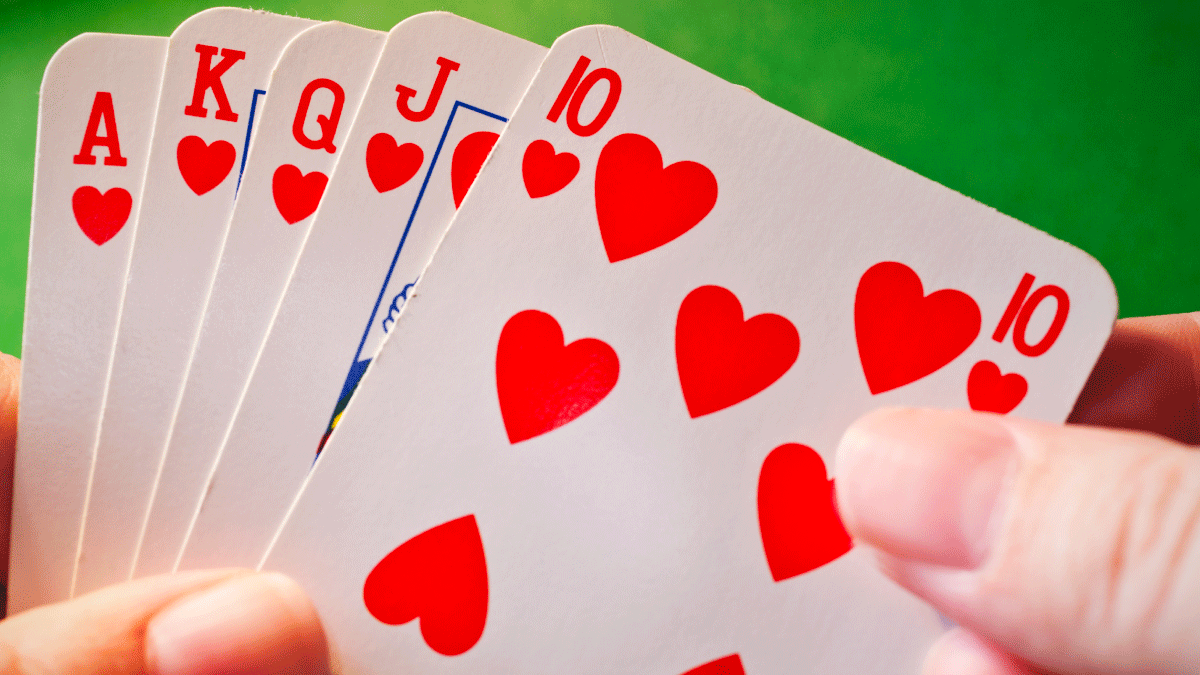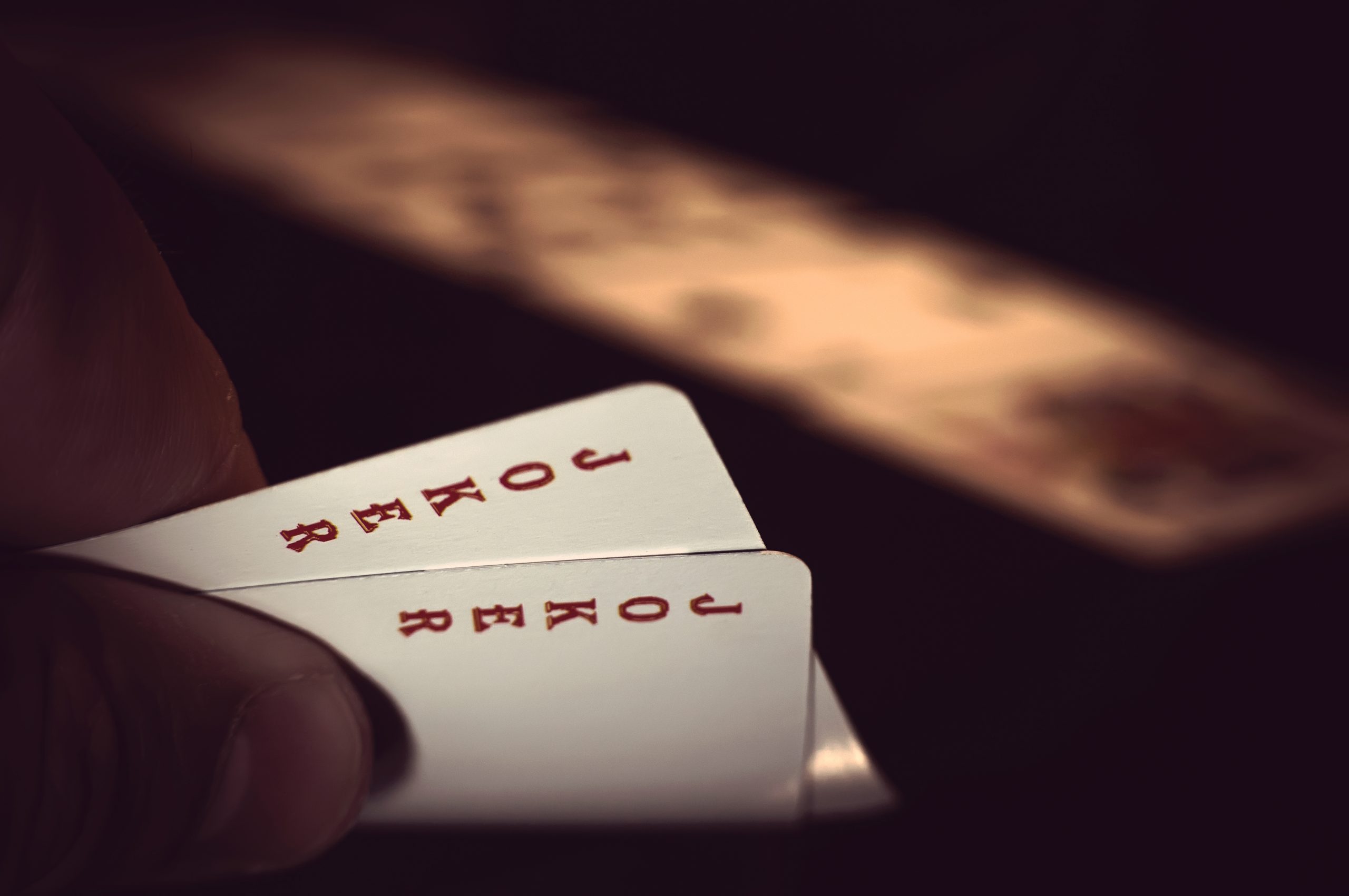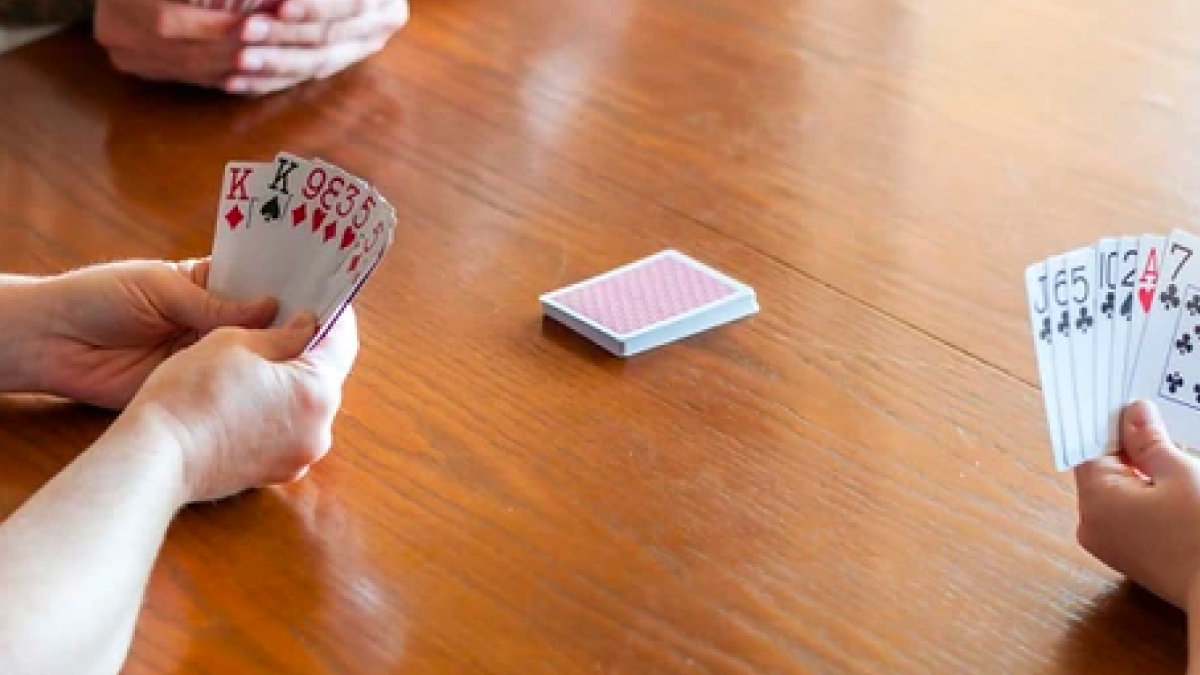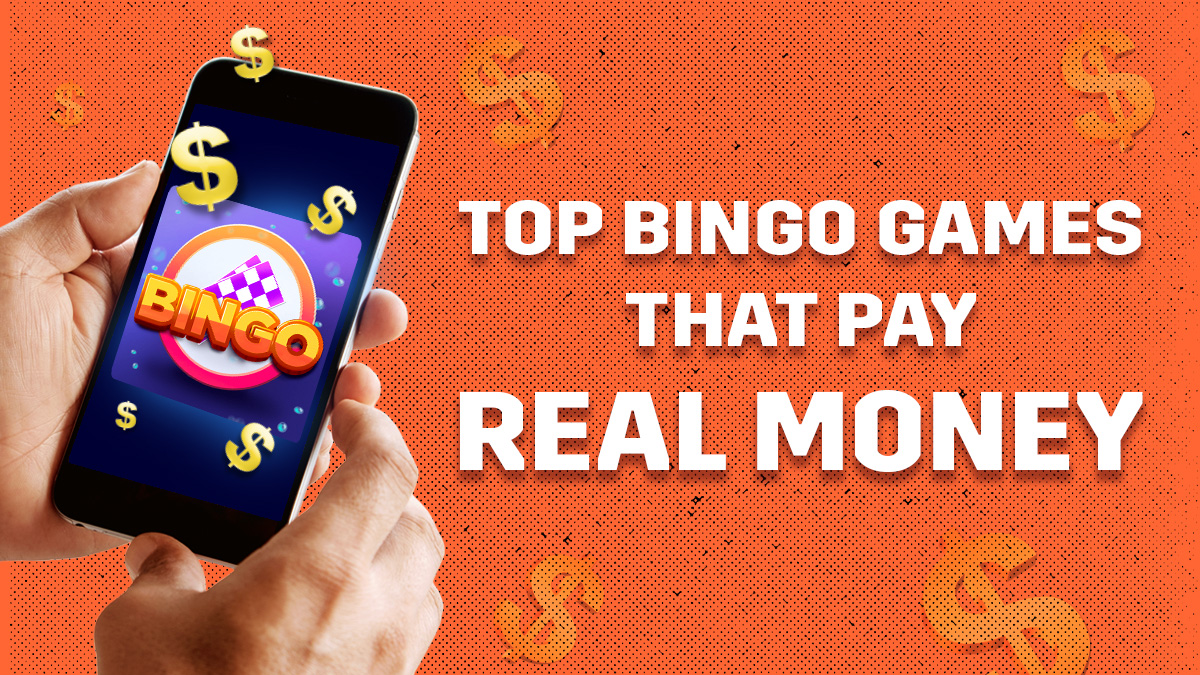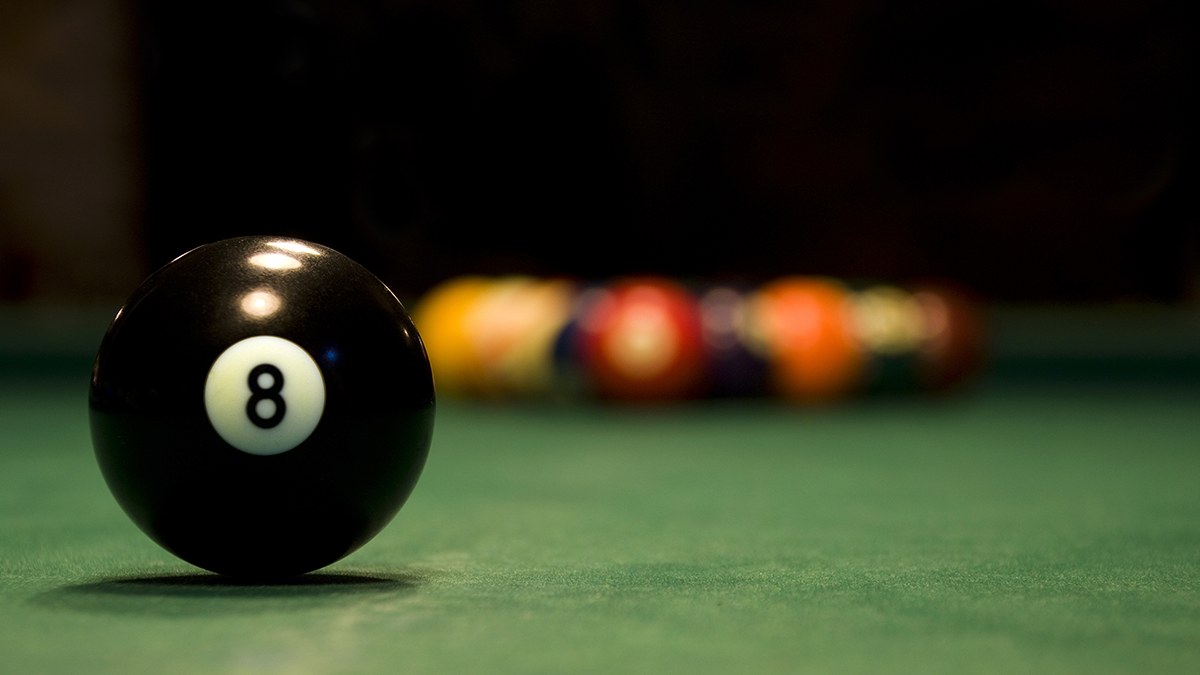Table of Contents
ToggleIf you’re looking for an interesting card game beyond Rummy, Canasta is for you. It is a fun yet challenging game that originated in the 1940s. Canasta has captivated players for years with its blend of strategy and skill. Due to the versatility of the game, the rules may seem complex for beginners, but with practice, Canasta becomes a rewarding and strategic experience.
Let’s unravel Canasta rules and strategies to make learning how to play Canasta easier.
Overview of Canasta Game Rules
Below, we walk you through what is canasta game in a quick overview.
- Canasta is played with 2-6 players using two standard 52-card decks plus jokers, which total 108 cards. In the case of more than three players, players can form partnerships, forming teams.
- Teammates sit across each other around the table.
- Each player is dealt 11 cards to start the game. The remaining cards are kept face-down to form a discard pile.
- The main objective is to form melds of at least three cards of the same rank; you can repeat the same card twice, e.g. 2 Ace of Hearts. A canasta is a meld that is made of seven or more cards with the same rank.
- There are natural and wild cards. You can use the wild cards (jokers and 2s) to substitute for other cards and form melds. But a natural card makes it easy to form valid melds, so always aim for that.
- Red 3 is a bonus card immediately replaced when drawn, while black 3s are used defensively to block the discard pile.
- On their turn, players draw a card and discard one, with the option to pick up the discard pile if they can use the top card.
- The game ends when a player goes out by discarding all their cards, but there’s usually a minimum point requirement (50 or 100 points) to go out.
- Scoring is based on the melds formed, canastas completed, and bonus cards collected, with negative points for cards left in hand.
- Players typically play to a predetermined score, often 5000 points, to win the game.
Also Read: How To Play Crazy Eights Card Game
How to Play Canasta for Beginners
Beginners can easily learn Canasta rules if they’re already familiar with other card games like Rummy because some of the terminology and game dynamics are common to both. Let’s now understand how to play Canasta.
Terminology Of The Canasta Card Game
Canasta: It is a meld group of at least seven cards with the same rank.
Wild Cards: Jokers and 2s (Deuces) are wild cards in Canasta.
Red 3s: Bonus cards that are immediately replaced.
Talons: The concealed cards each player holds are known as Talons.
Card Point Values in Melds
| Category | Cards | Value |
| Natural Cards | Aces | 20 |
| K through 8 | 10 | |
| 7 through 4 | 5 | |
| Black 3s | 5 | |
| Wild Cards | Jokers | 50 |
Objective
The game’s primary objective is to outscore the opposing team or opponents. You gain points by forming melds- a group of three or more cards of the same rank, with or without the help of wild cards. Here, “Melds” holds the same definition as rummy variants. When you form a group of at least seven cards, you have achieved making a Canasta.
Canasta uses two decks of cards, including two jokers, giving rise to 108 cards. It is generally played by four players, splitting into two teams. However, you can also play the game with 2 or 3 players individually.
Setup
The game begins by selecting a dealer to deal cards to each player. To decide the initial dealer, one card is given to each player from the shuffled deck, and whoever receives the highest card will be the first dealer. If there are ties, deals are repeated to choose the first dealer.
Once the dealer is chosen, he/she shuffles the deck, and the player to the right cuts it. 11 cards are dealt one-by-one to each player in a clockwise direction. Place the remaining cards in face down position to form the stockpile. However, the top card of the pile is revealed and kept aside to start the discard pile of the game. The dealer position rotates clockwise among all the players for each round.
Gameplay
The gameplay proceeds clockwise from the dealer’s left. Come to a turn, each player should draw a card from either the draw pile or the discard pile. You must pick up the discard pile card only if it helps start or add to a new meld. That is when they have at least two matching natural cards or add the two from their hand and discard them to an existing meld.
Also, when you take a card from the discard pile, you must take all the cards. At the end of your turn, you must discard one card. If you already have a meld of five or more cards matching the rank of the top discard pile, you can add the top of the discard to your meld. But you must still take the entire discard pile to build your hand.
Players continue to form melds, hoping to build a Canasta. Once a player or team builds a Canasta and runs out of cards, they can “go out” and finish the round. At the end of the round, each team or player’s score is counted and added to the existing score. The next round starts unless a player or team scores 5000 points.
A Frozen Discard Pile
The discard pile is frozen at the start of each round in Canasta. It requires two natural matching cards to pick up from the discard pile. Freezing occurs if a wild card is discarded. When that happens, the opposing team can not pick up the pile until a natural card is discarded.
Going Out
In the Canasta card game, a player can end the round by going out, which means they play all their cards. To go out, the player or team must have made at least one Canasta, which is a group of seven cards of the same rank. If they haven’t, they must keep one card in their hand.
If a player goes out without showing any cards beforehand, it’s called going out concealed, and they earn an extra 100 points. This surprise move can give you an advantage by catching opponents off guard, but it’s risky. So, if someone else goes out first, you will lose big points.
Scoring
Each player should count the total points accumulated at each round’s end. They have to add these points to their total game score. The following scoring rules apply:
- Each natural canasta earns 500 points.
- Mixed canastas carry 300 points each.
- A red three earns 100 points. However, if all four Red 3s are held by one team or player, each carries 200 points.
- Going out gives you 100 points.
- Going out concealed earns an extra 100 points.
- Melded cards carry respective card point values, as mentioned above.
If a player has cards left without going out at the end of the game of Canasta, they are counted towards negative points for his or her total game score. If a player or team hasn’t opened by the end of the round and has red threes left, they will also contribute to a negative score equal to the value of each red 3.
A partnership’s score for a hand is the sum of the points from all melded cards, plus any bonus value points minus the points from the cards left in both players’ hands.
Also Read: Go Fish Card Game Gameplay, Rules, & Tips to Win!
Winning the Game
The team or player to reach 5000 points will win the Canasta game. When they go out by playing their last card after their partnership has completed at least one canasta meld and also have the highest score (5000 points) after final scoring.
How to Play Canasta with 2 Players
Classic Canasta is a four-player game. However, there is also a two-player version with slight variations in rules. Canasta bonuses, red three bonuses, and penalties for not melding are identical to those of the four-player game.
So how is Canasta played with 2 Players?
- The dealer deals 15 cards to each player instead of the usual 11.
- Players draw two cards from the stock on their turn but only discard one card at the end of their turn.
- A player must complete two Canastas to go out, increasing the game’s strategic depth.
- The target score remains 5000 points, and if they reach or exceed this score, the player with the higher score wins.
- If only one card is left in the draw pile, the player drawing it must end their turn as if they drew two cards.
- Drawing a red three as one of the last two cards means no replacement card can be drawn; if drawn alone or as the last two cards, the player cannot meld or discard, and the hand ends immediately.
- Scoring for going out (100 points) and concealed going out (200 points) remains the same.
- The game still ends at 5000 points, with the higher-scoring team winning.
Additional Points to Remember
- Going out with a concealed hand (without melding any cards beforehand) results in an extra 100 points.
- If you discard a wild card or a black three, the discard pile is “frozen”. Take it only if you can immediately use the top card in a meld.
- The point value of the first meld increases with each team’s score. For example, if a team’s score is between 0 and 1,495, they need a 50-point meld; if it’s between 1,500 and 2,995, they need a 90-point meld; and so on.
- Drawing a red three earns a team 100 points, but you must place it on the table immediately. If all four red threes are collected by one team, they receive a 400-point bonus.
- A Canasta must contain at least four natural cards.
- Wild cards can be used but are limited in number within a single Canasta.
- Players cannot create a meld of just three cards unless it’s a Canasta.
- The last card cannot be a wild card; a player must have a natural card to go out.
Brief History of Canasta
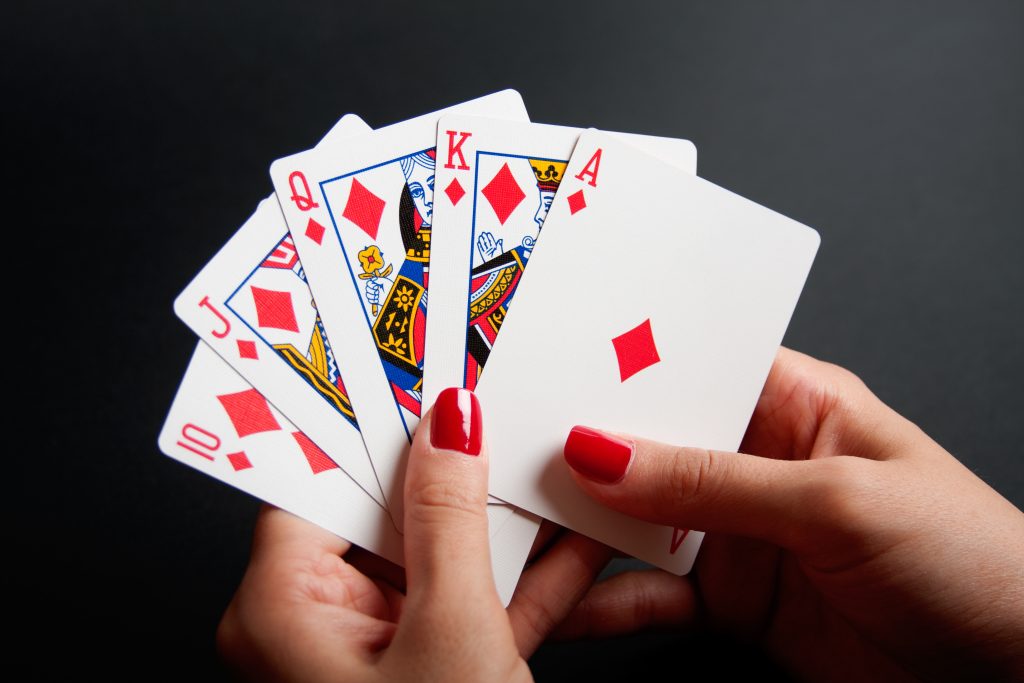
source: design4gaming.com /shutterstock
Cansta originated in Montevideo, Uruguay, back in 1939. It was brought forth by Segundo Santos and Alberto Serrato. The game resulted from wanting to develop a more tactical alternative to Bridge and Rummy. Consequently, Canasta blends many aspects of Bridge and Rummy. When introduced among their friends, it instantly became popular. They often held test games at bars and restaurants, and they’d borrow a little basket, Castillo in Spanish, from the waiters to keep their play cards. Thus, the name became Canasta over time and went through wordplay.
Canasta immediately traveled from Uruguay to Argentina, Chile, Peru, and South America. The game reached the United States in the late 1940s and became a massive hit, particularly during the early 1950s. Over time, various versions of Canasta emerged, including the American version, which introduced new rules and variations.
Although its popularity eventually waned, Canasta remains a favorite among card game enthusiasts. Today, it is enjoyed worldwide, with online platforms and tournaments keeping the game alive for new generations of players.
Canasta Variations
Here are a few Canasta game variations you can try.
Samba Canasta
Samba Canasta introduces an extra deck of cards and allows the formation of “sambas,” sequences of seven consecutive cards in the same suit. Card values are also increased. Players now have to aim for 10,000 points instead of 5,000. Melds can include both cards of a kind and sequences but with only two wildcards per meld. Six Reds 3’s earn 1,000 points. For teams with 7,000 points or more, the initial meld must be at least 150 points, making it more challenging.
Hand and Foot Canasta
The hand and Foot version adds depth to the rules of Canasta by dealing each player with two hands: a “hand” and a “foot.” Players must play through their hands first before accessing their feet. Compared to classic Canasta, Hand and Foot features in this version carry different point values, meld requirements, wild card bonuses, and specific card effects. It also ends after a predetermined number of rounds, offering a more structured format.
Bolivian Canasta
Bolivian Canasta ramps up the excitement with additional wildcards and special scoring rules. Though it is similar to Classic Canasta, this version allows for a “wild canasta” composed entirely of wildcards like jokers and twos. The pace is faster and more unpredictable, with high-scoring opportunities, e.g., 3,000 points for a wild canasta. Players must balance risk and reward with dynamic strategizing.
Strategies & Tips to Win in Canasta
Now that you are aware of all the rules of Canasta and how to play Canasta let’s understand how to ace the game with robust tips and strategies.
Card Tracking
In this strategy, you must pay close attention to the cards your opponents play, discard, and pick up. When you track these moves, you can guess what cards they might need or avoid giving them useful ones.
Also, you can identify which cards are scarce and adjust your plays accordingly. For example, if you notice a player melds two Jacks, you will know only six Jacks remain. This will help you plan your strategy for forming your own melds or blocking theirs. This can be a crucial strategy in the canasta card game.
Black 3 Blocking Strategy
Black 3s are special cards in Canasta because they prevent the next player from taking the discard pile. So, when you discard a black 3, you can block your opponent from accessing valuable cards in the discard pile. This gives your partner a better chance to take it on their turn.
Since black 3s can only be melded at the end of the game, they are mainly used for strategy purposes to disrupt your opponent’s plans and control the flow of the game.
Delay Meld Strategy
Apart from knowing how is Canasta played, understanding these strategies will come in handy. Hold onto your melds instead of laying them down immediately. This way, you keep your hand hidden and make it harder for opponents to counter your moves.
If they don’t know what you are collecting, they are less likely to block your strategy by holding onto matching cards. So, keep at least two cards of the same rank in your hand to pick up the discard pile if the top card matches.
Wild Card Management
Wild cards, which include 2s and Jokers, are valuable because they can be used to complete or extend melds. Play them into melds as soon as possible. This prevents them from being stuck in your hand, where they would count as negative points if your opponent goes out. So, avoid discarding wild cards, as it could freeze the discard pile or give your opponent access to high-value points
Endgame Strategy
As the draw pile runs low or if an opponent picks up a large discard pile, it’s a good time to end the game by going out. When you do this, it pushes opponents to keep the unplayed cards in their hands, which count as negative points against them.
Even if your melds don’t score many points, you can reduce your losses or secure a win by catching opponents unprepared. This strategy helps you take control of the game’s outcome when resources are limited.
Conclusion
Canasta is a challenging rival to classic Rummy or Bridge. It has a blend of strategy and skill for card game enthusiasts. Whether you’re drawn to the classic version or intrigued by its variations, there’s a Canasta style for everyone. The rules of Canasta become easier with regular play. So gather your friends, shuffle those decks, and explore the fun card game of Canasta. Happy playing!
Read Also: How to Play Whist Card Game?
FAQs
How to Play Canasta With 2 Players?
Two-player Canasta card game is very similar to a four-player canasta, except that it is more challenging. Each player starts with 15 cards and draws two cards from the stock instead of one. Unlike the four-player version, where players form partnerships, this version requires each individual to complete two canastas to end the round.
Are Canasta rules difficult to learn?
Canasta rules can initially seem complex due to the various combinations, special cards, and scoring methods involved. But beginners can learn enough of the game in just 20 minutes to play their first game confidently. The game becomes easier to follow once you understand the basics, such as forming melds and managing the discard pile. With practice, you can quickly grasp and enjoy the game.
What is a meld in Canasta?
Meld in Canasta carries the same meaning as in Rummy- a group of 3 or more cards of the same rank, regardless of suit. A canasta is a meld of seven or more cards. You can increase them by adding more natural or wild cards of the same rank (jokers and 2s). Melds made by both players are placed in front of one of them.
What are the basic rules of Canasta?
The basic rules of the Canasta card game are;
- Canasta is played with two decks, including Jokers.
- You must form melds, which are sets of 3 or more cards of the same rank, to score points.
- A Canasta is a meld of 7 cards.
- You must draw and discard cards each turn.
- The goal is to score the most points by melding and going out.
How to remember cards in Canasta for beginners?
To remember cards in Canasta, focus on patterns. Start by remembering the cards you have seen in the discard pile and what your opponents have played. Keep track of cards that are missing from the deck. Practice visualizing your hand and the discard pile to strengthen your memory as you play.
What is a dirty Canasta?
When a meld of seven cards or more of the same rank includes wild cards (jokers or deuces), it is a dirty canasta. It is called so because it’s not “clean” or “natural” Canasta, made only of cards of the same rank. They fetch fewer game points than clean ones.
How did the Canasta game get its name?
Canasta originated in Uruguay in the 1940s. The name “Canasta” comes from the Spanish word for “basket”. It likely refers to the game’s central objective of forming melds or sets of cards, metaphorically collecting them in a basket. Of course, the term also describes the game’s signature seven-card meld- a Canasta.
Is Canasta good for the brain?
Yes, the Canasta card game engages cognitive skills like memory, strategic thinking, and pattern recognition. Players have to remember discarded cards, plan moves ahead, and adapt different strategies, helping them maintain mental acuity. The game is beneficial to older adults as it contributes to cognitive stimulation.
Is the Canasta game similar to Rummy?
While Canasta belongs to the family of Rummy card games, both have similarities and differences. Both games are card-melding games, where players have to form sets or sequences of cards and discarding. But in Canasta, there are features like wild cards and special bonus cards. Canasta also typically uses two decks and has different scoring systems, making it more complex than basic rummy.

